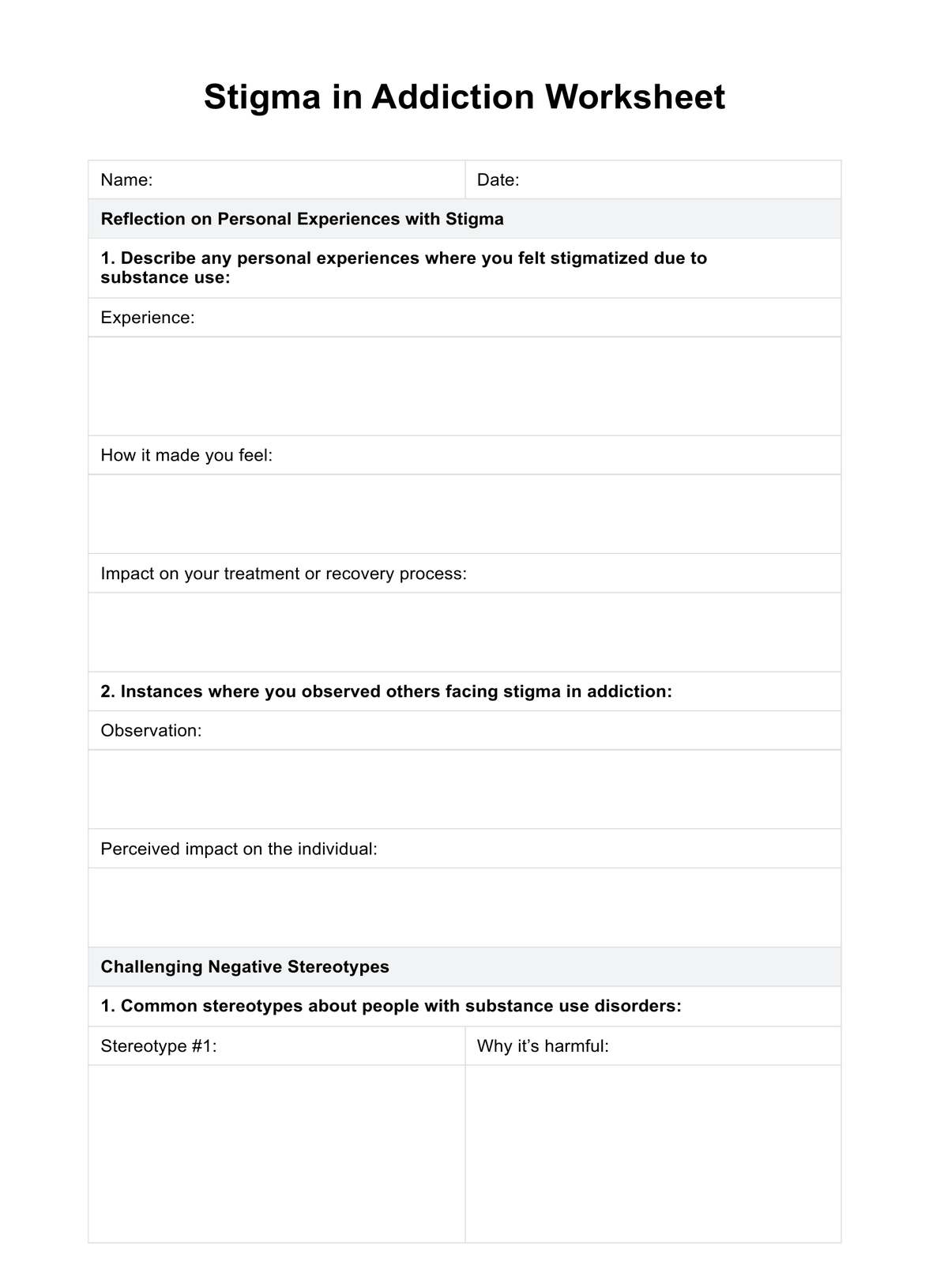The following people can benefit from our Stigma in Addiction Worksheet: individuals struggling with substance use disorders; family members and friends of those affected by substance use; healthcare providers and therapists working in addiction recovery; and community leaders and educators aim to reduce stigma and support recovery.

Stigma in Addiction Worksheet
Discover how to challenge and overcome the stigma associated with addiction with our free downloadable Stigma in Addiction Worksheet.
Use Template
Stigma in Addiction Worksheet Template
Commonly asked questions
Stigma can exacerbate feelings of shame and isolation in individuals with a substance use disorder, hindering their willingness to seek help and access treatment.
Addiction is a chronic, relapsing disorder characterized by compulsive drug seeking and use despite adverse consequences, while lifestyle refers to a way of living that reflects an individual's attitudes, values, and habits.
EHR and practice management software
Get started for free
*No credit card required
Free
$0/usd
Unlimited clients
Telehealth
1GB of storage
Client portal text
Automated billing and online payments











